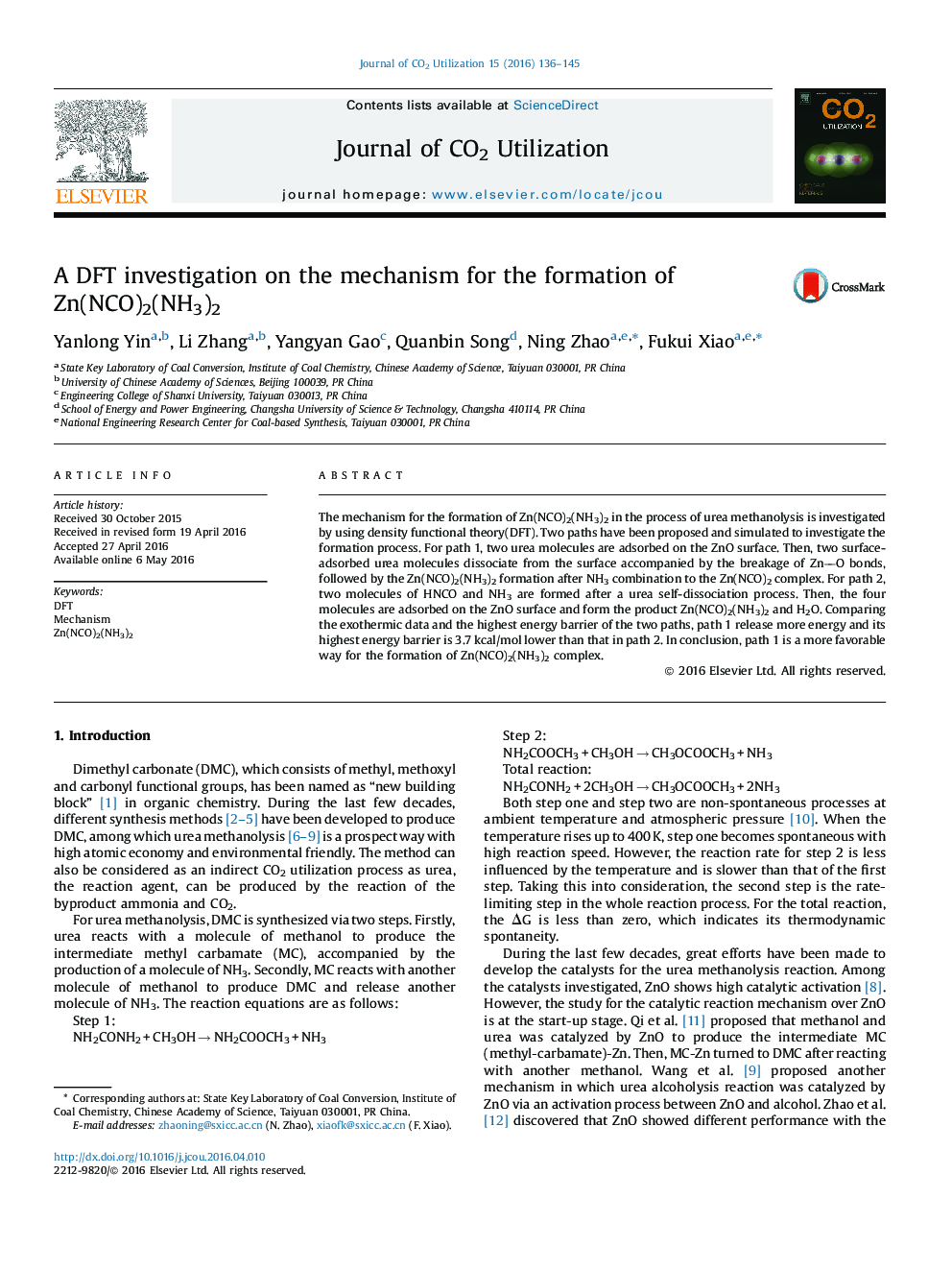| Article ID | Journal | Published Year | Pages | File Type |
|---|---|---|---|---|
| 6456388 | Journal of CO2 Utilization | 2016 | 10 Pages |
â¢Detailed investigation on the mechanism for the formation of the Zn(NCO)2(NH3)2 in urea methanolysis.â¢Direct pathway in which urea is activated by ZnO is more favorable.â¢The dissolution of ZnO in urea methanolysis my due to the formation of the catalytic active species Zn(NCO)2(NH3)2.
The mechanism for the formation of Zn(NCO)2(NH3)2 in the process of urea methanolysis is investigated by using density functional theory(DFT). Two paths have been proposed and simulated to investigate the formation process. For path 1, two urea molecules are adsorbed on the ZnO surface. Then, two surface-adsorbed urea molecules dissociate from the surface accompanied by the breakage of ZnO bonds, followed by the Zn(NCO)2(NH3)2 formation after NH3 combination to the Zn(NCO)2 complex. For path 2, two molecules of HNCO and NH3 are formed after a urea self-dissociation process. Then, the four molecules are adsorbed on the ZnO surface and form the product Zn(NCO)2(NH3)2 and H2O. Comparing the exothermic data and the highest energy barrier of the two paths, path 1 release more energy and its highest energy barrier is 3.7Â kcal/mol lower than that in path 2. In conclusion, path 1 is a more favorable way for the formation of Zn(NCO)2(NH3)2 complex.
Graphical abstractDownload high-res image (107KB)Download full-size image
